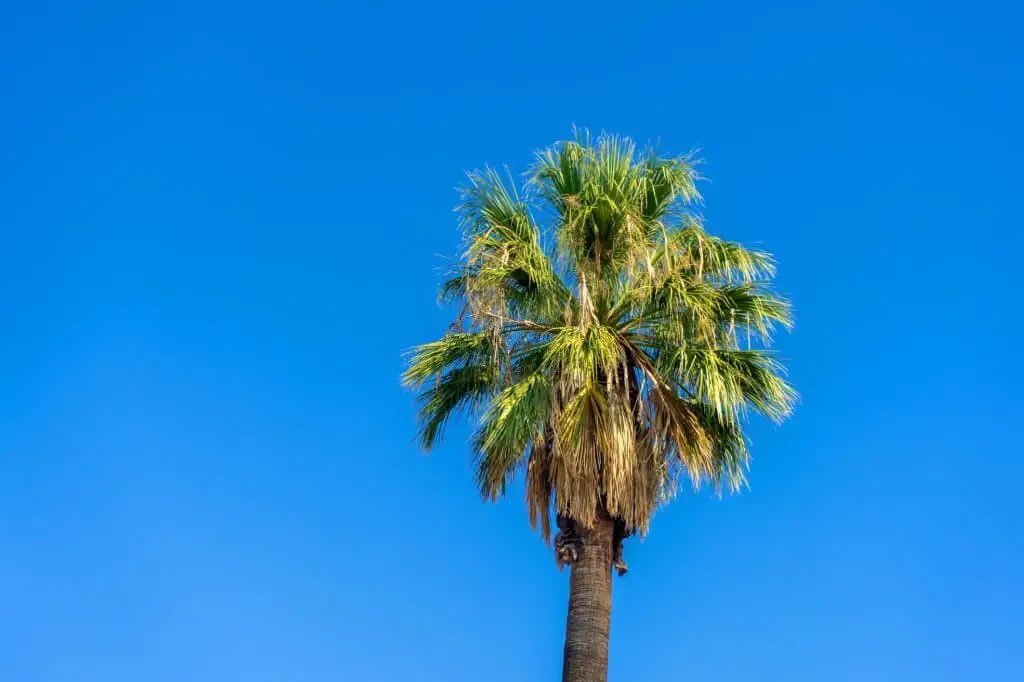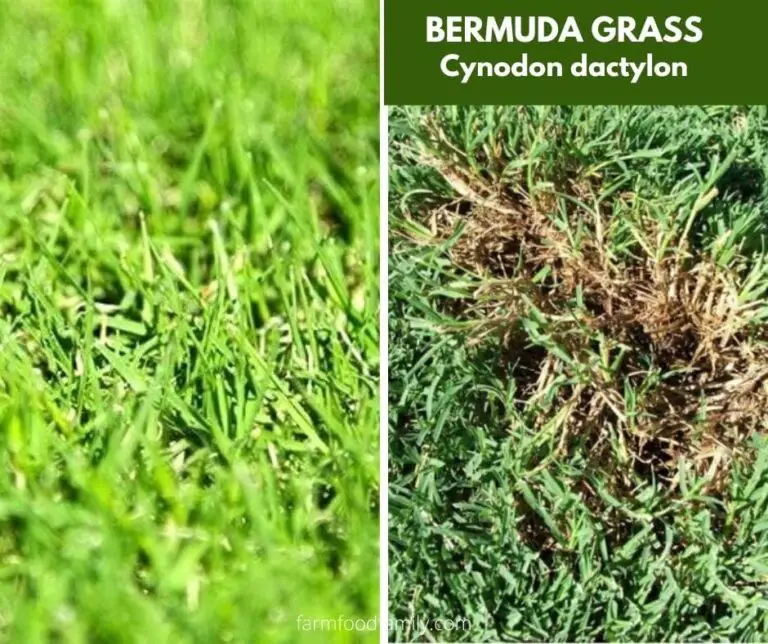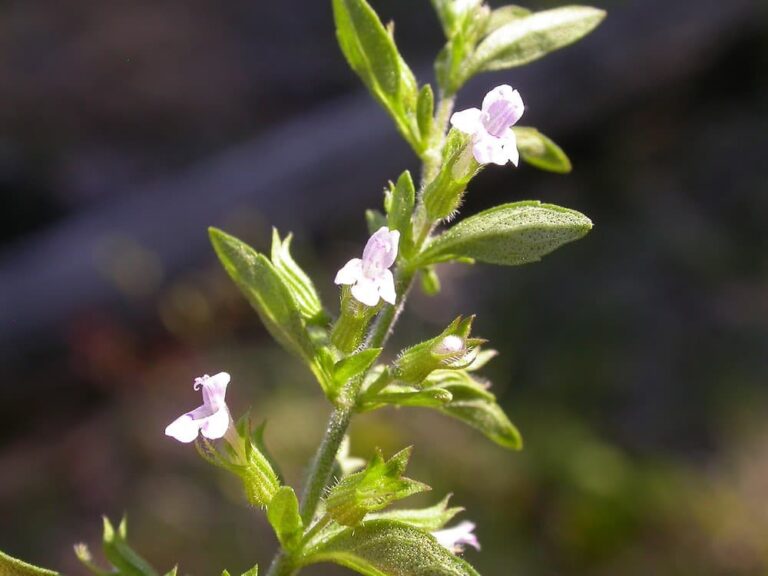25+ Popular Types Of Daisies With Facts & Photos
Daisies are a nostalgic reminder of childhoods, with their iconic ‘he loves me, he loves me not’ game. Beyond that familiar flower, daisies have become popular houseplants as both ground covers and indoor plants. In fact, they’re one of the most cultivated flowers globally, with over 500 types to explore, including hybrids and cultivars. This vast array can be overwhelming, so we’ll focus on some of the most common types that showcase their remarkable diversity.
What makes daisies so beloved is their delicate appearance and wide color palette. However, did you know that there are many other daisies with unique appearances? If this sparks your curiosity, read on to discover more about these fascinating flowers.
In this article,
We’ll delve into the world of daisies, covering their meaning and symbolism, as well as exploring various types, including Gerbera, Bellis, Shasta, Arctotis, Painted, Monoptilon, Chrysanthemum, Gloriosa, Marguerite, Osteospermum, Coneflowers, and Townsend daisies. With so many varieties to choose from, you’re sure to find one that suits your taste.
Daisy meaning & symbolism
The humble daisy is steeped in symbolism, originating from an Anglo-Saxon term meaning ‘day’s eye’, referencing its habit of unfolding at dawn and curling up at dusk. This symbolic connection to innocence, new beginnings, transformation, and cheerfulness has made it a popular choice for gifting friends and family who’ve achieved milestones, moved into new homes, or received promotions.
It also serves as a thoughtful gesture for those recovering from illness or struggling with emotional downturns. In various cultures and traditions, the daisy’s significance is profound. In Celtic lore, it’s believed that God plants daisies to console grieving parents following the loss of an infant, thus linking it to purity and innocence. In Norse mythology, Freya’s sacred flower, the daisy represents fertility, motherhood, childbirth, and new beginnings.
In Scandinavian culture, daisies are presented as congratulatory flowers, while in Roman lore, they’re associated with Bellis, a nymph who transformed into a daisy to escape Vertumnus’ affections. In Christian tradition, the daisy is linked to the Virgin Mary, symbolizing chastity and purity. In modern language, the daisy has taken on additional meanings, such as ‘whoops, a daisy’, signifying shock or accidental discovery, or ‘you’re such a daisy’, implying something extraordinary.
This rich tapestry of symbolism has contributed to its enduring popularity, making it more than just a lovely addition to any garden – it adds meaningful depth and beauty.
Types of daisies
Gerbera daisies


Gerbera daisies are among the most popular varieties of daisies globally, widely cultivated as indoor plants and a common choice for bouquets. As a result, numerous hybrids have been developed to offer an expanded range of colors and styles. One of the defining features of Gerbera daisies is their diverse petal arrangement, which can include single, double, or multiple petals. They can be propagated through seeds as well as division.
Gerberas are known for their vibrant color palette, which includes shades of yellow, pink, salmon, red, orange, and white. Some popular varieties within this genus include Gerbera viridifolia, also referred to as the Blushing Barberton Daisy, which produces cream, lilac, and deep purple flowers that bloom intermittently throughout the year, with a more profuse display during spring.
Another notable variety is Gerbera jamesonii, also known as the Transvaal daisy or Barberton daisy.
This perennial plant does not conform to the traditional daisy appearance and is sometimes classified as its own species. Its flowers come in bright hues of orange, red, pink, and yellow. As one of the two most commonly used base plants for gerbera hybrids, it has gained widespread recognition as an ornamental favorite.
Bellis Daisies


The Bellis genus boasts a range of species, with the common daisy being one of the most well-known types. Characterized by its small, white petals and vibrant yellow center, this perennial produces solitary flowers on each stem. With 12 species in total, this group is notable for their robust nature and ability to thrive in spring bedding. Their blooming habit takes on a pompom-like quality, yielding single or double flowers in an array of colors including white, pink, and red.
One unique species within the Bellis genus is Bellis cordifolia, an annual daisy native to Spain. Sharing many similarities with the common daisy, it features white petals and a yellow center, along with medicinal properties. Double-flowered blooms are its hallmark, coming in shades of yellow, white, pink, and red. The only distinguishing feature is its smaller size compared to other Bellis species.
The English daisy, or Bellis perennis, earns its name due to its common use as a ground cover in lawns. Its classic appearance features white ray florets and a yellow center, with each stem producing solitary, single flowers. Preferring cooler temperatures and shady planting sites, this perennial blooms from early spring to mid-summer in a range of colors including red, pink, white, and blue.
Shasta daisies (Leucanthemum Daisies)


The Shasta daisy, a perennial hybrid, is known for its towering growth of up to 6ft tall and its white flowers that resemble traditional daisies. Its hardiness is evident in its ability to withstand drought and resist various diseases, pests, and critters like deer and rabbits. The name ‘Shasta’ originates from Mount Shasta in Northern California. One notable variety is Leucanthemum x superbum (Shasta daisy), the most popular among its kind.
Its distinguishing feature is its year-round deep green foliage, although it only blooms for a few years consecutively. This adaptable flower thrives under a wide range of growing conditions, including varying soil, light, and water requirements. Another common variety is Leucanthemum vulgare (oxeye daisy, dog daisy), also known as moon daisy or dog daisy.
This adaptive daisy grows in wastelands, meadows, and grasslands, reaching heights of up to 2ft with toothed leaves that become smaller towards the top. Each stem produces solitary flowers. Unlike wildflowers, it typically dies after two to three years, but its ability to thrive in diverse environments makes it a beloved choice.
Arctotis Daisies



The African daisy, also known as Arctotis, is a perennial daisy native to South Africa, with around 60 species including hybrids. A unique characteristic of these daisies is that most of their species do not have stems, instead flowering directly from the plant’s base. Their silver-green foliage and flowers are also notable for closing at night, partially opening on cloudy days, and fully blooming in full sun.
One example of an African daisy is Arctotis grandis, also known as the blue-eyed daisy. This rare species features a unique dark blue center, white petals with a pale-yellow outer ring, and can spread up to 3 inches with flowers reaching 2 inches in width. It blooms en masse throughout summer and maintains its silver-green foliage year-round.
Another example is Arctotis acaulis, a low-growing perennial that excels as a ground cover at 1 foot tall and 2-3 feet spread.
It thrives in full sun with low water requirements and produces large flowers in shades of red, orange, and pink from spring to summer.
Finally, Arctotis revoluta is also known as the Curly Leaf daisy. This shrub can grow in a wide range of soil and climate conditions and has low care requirements once established. Its leaves roll backwards on their edges, earning it the name ‘revoluta’. It produces yellow flowers in summer.
Painted Daisies



Native to southwest Asia, this genus of daisies thrives in a wide range of soil, light, and water conditions. They are propagated through seeds or stem cuttings, making them accessible for gardeners to cultivate. The unique color palette of these painted daisies has earned them a special place as favorite bouquet flowers and natural insect repellents. One notable variety is Double Feverfew, also known as Feverfew Flore Pleno.
Characterized by its small, double flowers resembling the typical daisy, it’s a popular companion flower for gardens. Its citrus-scented blooms make it a unique find in traditional medicine, used to treat fever and migraine. Additionally, it serves as a natural insect repellent. Another variety is Golden Tansy (Tanacetum vulgare), also referred to as golden buttons or ginger plant. Its golden yellow color and button-like appearance make it a standout throughout the summer.
As both a border plant and ornamental, its heavy scent makes it a popular choice. Its fern-like leaves are an added bonus, reaching up to 3ft in height and 2ft in width. This self-seeding, drought-tolerant variety is also a known natural insect repellent. The showy bloomer Painted Daisy ‘Brenda’ (Tanacetum coccineum) boasts magenta-colored ray florets and a golden yellow center, producing large flowers up to 3 inches wide in bulk.
Its longevity is impressive, showcasing blooms from mid-spring until late summer. Like its painted daisy cousins, it emits a citrus scent, making it a natural insect and mosquito repellent. Even after the blooms fade, its deep green fern-like leaves maintain their attractiveness throughout the year. A favorite of bees and butterflies, it’s also a popular cut flower.
Monoptilon Daisies


In the arid expanse of the Mojave Desert, a unique genus thrives, boasting an array of fascinating species. One such standout is Monoptilon bellidiforme, affectionately dubbed the daisy desertstar or small desert flower. This diminutive bloom has adapted to its harsh environment by developing tiny stems that seem to burst forth from the ground itself, giving the appearance of sprouting directly from the earth’s surface.
Its leaves are covered in soft, green fuzz, evoking the texture of succulents. A burst of yellow and white flowers erupts during the winter months, typically flourishing in sandy soils and humid climates. Another notable species within this genus is Monoptilon bellioides, also known as the Mojave Desert star. Native to Mexico, California, Arizona, and Nevada, it bears a striking resemblance to its bellidiforme counterpart, sharing similar foliage, growth patterns, and flower shapes.
However, a key distinguishing feature lies in its deep purple-red stems, larger flowers, and pink-tinged centers, setting it apart from its daisy desertstar cousin.
Chrysanthemum daisies


The chrysanthemum’s rich history of medicinal use dates back to ancient China, where it was cultivated for its diverse range of therapeutic properties. In fact, the plant is considered one of the oldest and most revered in Chinese medicine, valued for its ability to lower blood pressure, cholesterol levels, and even exhibit anti-aging and anti-inflammatory effects.
Among the many species of chrysanthemum, Chrysanthemum indicum stands out for its striking appearance.
Also known as Indian chrysanthemum, this tall variety can grow up to 2ft in height, featuring yellow and ruby red tinged ray florets with a yellow center that blooms from summer to early fall.
The young leaves of this species are dried and used to make tea, while the flowers are fermented into vinegar due to their citrus scent and chamomile-like taste. This versatility has made them a popular ingredient in many herbal remedies.
Another notable species is Chrysanthemum morifolium, also known as Florist’s Daisy. Its bright yellow blooms resemble pom-poms and thrive in cold temperatures with less than 14 hours of sunlight. Reaching up to 3ft in height, this variety boasts leaves that are 5 inches long and has gained popularity as an indoor plant due to its well-known air-filtering properties.
Gloriosa Daisies (black-eyed Susans, Rudbeckia hirta)

Rudbeckia, also known as yellow or orange daisy, is a short-lived perennial native to eastern and central North America. While it may be listed under the ‘daisy’ category, it’s actually a distinct species that’s unique for its hairy stems and leaves.
Gardeners can expect these perennials to grow to heights of 2-3 feet and thrive in full sun with well-draining soil. As the summer months arrive, they’ll be rewarded with beautiful golden yellow ray florets boasting brown-black centers.
Among the showiest cultivars are Sonora and Cherokee Sunset.
Marguerite Daisies (Argyranthemum Daisies)


Argyranthemum species are prized for their vibrant flowers and versatile growth habits. The Federation Daisy, also known as Marguerite daisy or Paris Daisy (Artyranthemum frutescens), thrives in cooler temperatures and attracts bees with its rare blue color selection from spring to early winter. In contrast, the Marguerite daisy (Argyranthemum frutescens) is a perennial shrub that requires full sun, warm temperatures, high humidity, and fertile soil.
It must be protected from strong winds and frost, blooming yellow, white, and pink ray florets from spring to summer. The Canary Island marguerite or Lance-Leaf Marguerite Daisy (Argyranthemum foeniculaceum) is also known as Royal Haze. Its flowers bloom late spring to summer, featuring the classic daisy appearance with white ray florets and a yellow center.
This low-growing variety makes an excellent ground cover, boasting blue-green foliage with a soft-feathery texture that remains attractive year-round.
Osteospermum Daisies (African daisies)


While Osteospermum species are often referred to as daisy bushes due to their tall, bushy growth habit, they are actually a distinct group of perennials that differ from Dimorphotheca and typical daisies. One notable feature is the wide range of vibrant color options, with metallic-like centers adding an extra layer of visual interest. Among the most popular Osteospermum species is Osteospermum jucundum, also known as Delightful African Daisy.
This variety boasts larger blooms than its daisy counterparts, featuring pink-purple flowers and yellow centers adorned with a striking maroon ring. The plant’s attractive gray-green foliage is also noteworthy, emitting a sweet fragrance that attracts pollinators. It thrives in full sun, slightly moist, and well-draining soils, making it easy to propagate using stem cuttings in spring or fall.
Osteospermum jucundum is particularly useful for suppressing weed growth, and its hardiness allows it to be grown as a container plant in regions where temperatures drop to -5 degrees Celsius. Another standout species is Osteospermum ecklonis, also known as Cape Marguerite or Van Staden’s River Daisy. This beauty is prized for its rich colors and profuse pollen production, making it a favorite among bees.
Its white ray florets feature striking blue/lavender undersides, and it excels in full sun, moist, well-draining soil, and sheltered locations to reduce wind damage. Reaching heights of up to 4ft and with flowers as wide as 3ft, Osteospermum ecklonis can be grown as a perennial in warmer, temperate climates or cultivated as an annual in colder regions.
Coneflowers (Echinacea Daisies)


Echinacea’s unique appearance sets it apart from other daisies, with spiky centers featuring curled, downward rays that evoke the sea urchin or hedgehog, hence its name. Native to central and northeastern America, these flowers are cultivated for their impressive medicinal properties.
Among the most notable species is Echinacea purpurea, also known as the purple coneflower.
This American native boasts vibrant purple cone-shaped flower heads that have earned it numerous awards for its stunning color range. Its popularity extends to its medicinal uses, particularly in boosting the immune system.
Another striking species is Echinacea pallida, or pale purple coneflower. Its delicate petals droop like draped skirts, adding a whimsical touch to its pink-purple hue.
A favorite among butterflies, this flower is perfect for pollinating gardens and can grow up to 4ft tall in full sun with well-draining soil. Native to the central US, it thrives in states such as Mississippi, Michigan, and New England.
Townsend daisies (Townsendia)


The Bellis genus, named after David Townsend’s discovery in 1833, comprises 25 species native to North America. This aster family-related group of plants has garnered significant attention from botanists for its unique characteristics and widespread presence across the United States. Among these species, two notable examples are Townsendia florifer (Showy Townsend Daisy) and Townsendia incana (Silvery Townsendia Daisy, Easter Daisy).
The former is a biennial wildflower with a classic daisy appearance, featuring white or pink ray florets and a yellow center. It spreads up to 1.5 feet when used as ground cover, making it a popular choice in areas like Idaho and Montana. In contrast, the latter’s stems are distinguished by a silver-gray effect due to their white hairs, which also adds to its leaf edges.
Dubbed the Easter Daisy or Silver Townsendia, this plant is particularly notable for its prolific flowering, creating a full wreath-like appearance.
What color daisies are there?
While many people associate daisies with traditional white petals and yellow centers, this assumption couldn’t be further from the truth. In reality, daisies come in a stunning array of colors, depending on the specific type or cultivar. The more varieties within a species, the greater the range of hues will be. From classic whites and creams to vibrant oranges, pinks, and purples, the color palette is remarkably diverse.
Some daisy types even feature unique center and ring colors that add an extra layer of beauty and complexity. In fact, certain cultivars boast additional tinges and nuances that make them all the more captivating. The result is a tapestry of colors that’s as varied as it is breathtaking.
Are daisy and sunflowers the same?
While both daisies and sunflowers share a common family connection with Asteraceae, their differences far outweigh any similarities. For instance, the genus Bellis is home to daisies, whereas Helianthus is where sunflowers reside. This distinction is just the starting point for a more nuanced understanding of these two flowers.
One notable difference lies in the ray florets: daisies boast an impressive array of patterns (single flower, double flower, curled, draped, lancing), whereas sunflowers tend to stick to a single, albeit varied, pattern. Furthermore, when it comes to color selection, daisies truly outshine their sunflower counterparts – but, surprisingly, sunflowers don’t just come in golden yellow hues; they also appear in orange, white, ruby red, and bronze tones.
Center discs are another area where the two species diverge: daisies offer a broader palette of colors, while sunflowers are limited to a single, darker hue (brown-black). And let’s not forget about height – sunflowers tend to grow taller than their daisy counterparts, as they’re often used in cut flower arrangements and stand upright, whereas daisies are commonly employed for ground cover.
With these differences in mind, it’s clear that while there may be superficial similarities between daisies and sunflowers, they remain distinct species.
Are daisies poisonous?
While daisies may seem harmless, it’s essential to acknowledge the toxicity they pose to pets and children. There are two key considerations: the Bellis genus, which encompasses the varieties discussed earlier, and the poison daisy from the Anthemis genus. The Bellis genus is particularly dangerous when ingested in large quantities by cats and dogs, causing adverse reactions such as hypersalivation, dermatitis, diarrhea, and vomiting due to its toxic compounds like lactones and pyrethrins.
Prolonged exposure can also trigger skin irritation in children. On the other hand, the poison daisy, also known as mayweed or stinking chamomile, is toxic to dogs, cats, and horses, featuring harmful substances like anthemic acid, tannic acid, chamazulene, and bisabolol. These toxins can lead to contact dermatitis, allergic reactions, vomiting, diarrhea, and even internal bleeding.
Is a daisy edible?
While it may seem unrelated to the previous topic, a fascinating fact is that daisies are also edible. In fact, they have been a popular addition to salads for centuries, particularly when combined with beets, carrots, and other vibrant vegetables. The inclusion of edible flowers adds not only visual appeal but also a delicate flavor profile. The common daisy, found in many lawns, is the most commonly used variety.
Its flower buds and young leaves are often added to salads or used as a garnish for sandwiches. In Eastern and European traditions, daisies are also used in soups, fermented into wine, or pickled to serve as a caper substitute. Beyond their visual appeal, marguerite, oxeye, and moon daisies are occasionally used in fresh salads not only for their color but also for the strong scent they impart. They can be added to sandwiches or cooked to add a pop of color to omelets.
Conclusion
Daisies are more than just a pretty face – their versatility and medicinal properties make them a popular choice among gardeners and herbalists alike. The variety of daisy types offers something for everyone, whether you’re looking to add a pop of color to your outdoor space or create a stunning bouquet for indoors. Beyond their aesthetic appeal, daisies have been used in traditional medicine for centuries, showcasing the flower’s holistic value.
Symbolically, daisies hold significant meaning, making them an excellent choice for those seeking a meaningful addition to their garden or arrangement.
Related Posts
When ordering flower delivery, it’s common to wonder whether tipping your floral courier is expected. The answer lies in understanding gratuities for this type of service. In addition to exploring the etiquette of tipping for flower deliveries, we’ll also delve into some other fascinating topics related to flowers and gardening, such as identifying weeds with yellow flowers and growing colorful perennials for partial shade gardens or containers.






